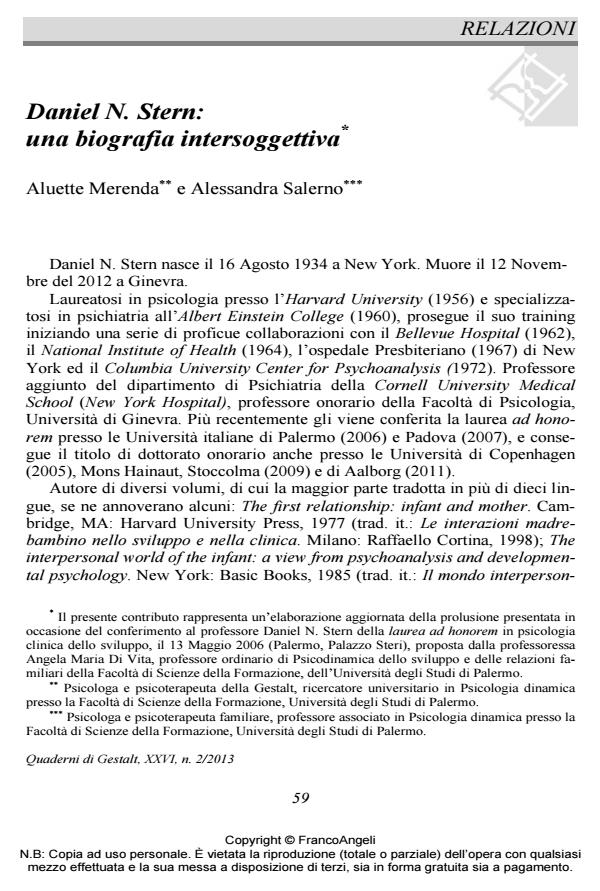Daniel N. Stern: an intersubjective biography
Journal title QUADERNI DI GESTALT
Author/s Aluette Merenda, Alessandra Salerno
Publishing Year 2014 Issue 2013/2
Language Italian Pages 7 P. 59-65 File size 734 KB
DOI 10.3280/GEST2013-002008
DOI is like a bar code for intellectual property: to have more infomation
click here
Below, you can see the article first page
If you want to buy this article in PDF format, you can do it, following the instructions to buy download credits

FrancoAngeli is member of Publishers International Linking Association, Inc (PILA), a not-for-profit association which run the CrossRef service enabling links to and from online scholarly content.
This paper presents a biography of Daniel Stern in which intersubjective qualities emerge through his life as academic and researcher of primary relationships. In particular, this paper’s aim is to focus on how the changing paradigm of all forms of vitality (arts, development, psychology and psychotherapy) that lead him to compare the context of child development with the psychoanalytic setting, updating the same constructs and relational implicit schemas, which he identified in development of relationship between child and caregiver.
Keywords: Intersubjectivity, changing, primary relationships, forms of vitality, psychotherapy, development.
Aluette Merenda, Alessandra Salerno, Daniel N. Stern: una biografia intersoggettiva in "QUADERNI DI GESTALT" 2/2013, pp 59-65, DOI: 10.3280/GEST2013-002008